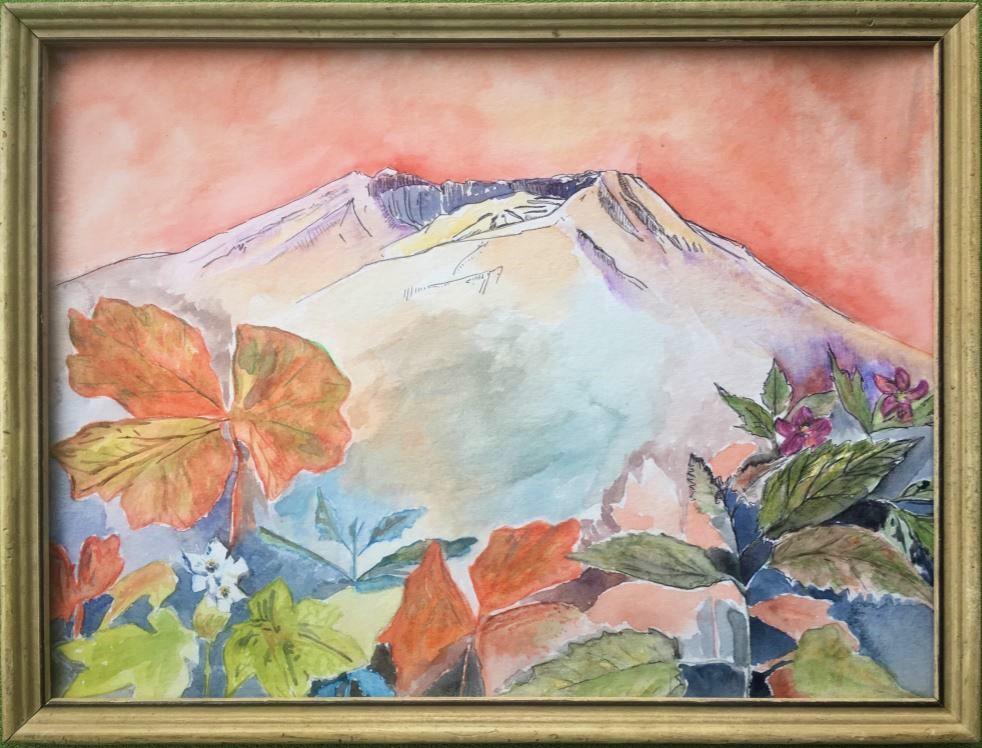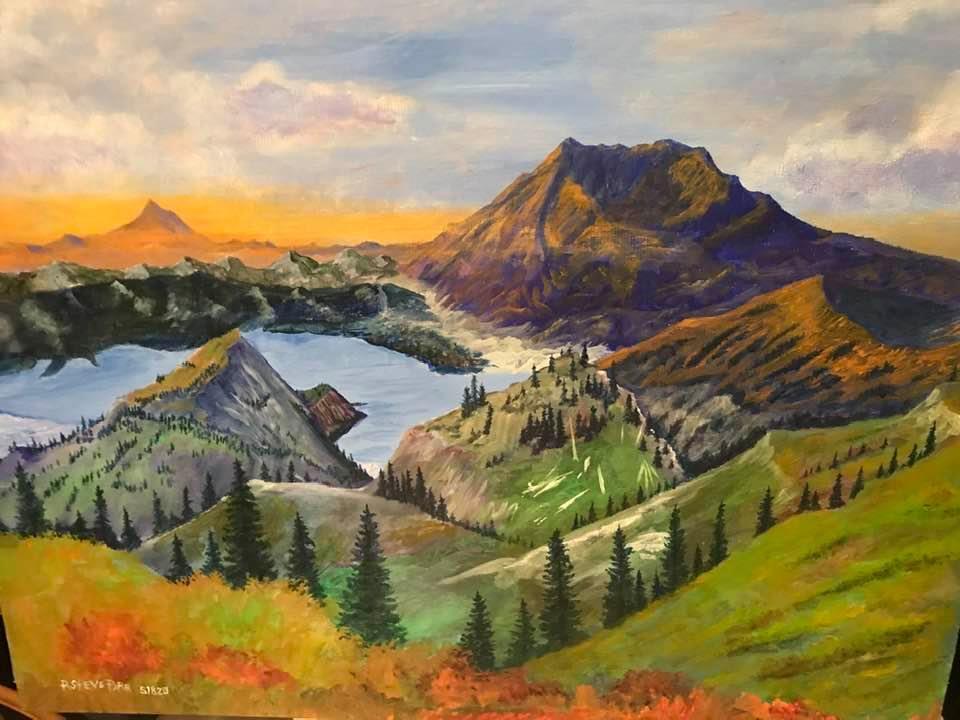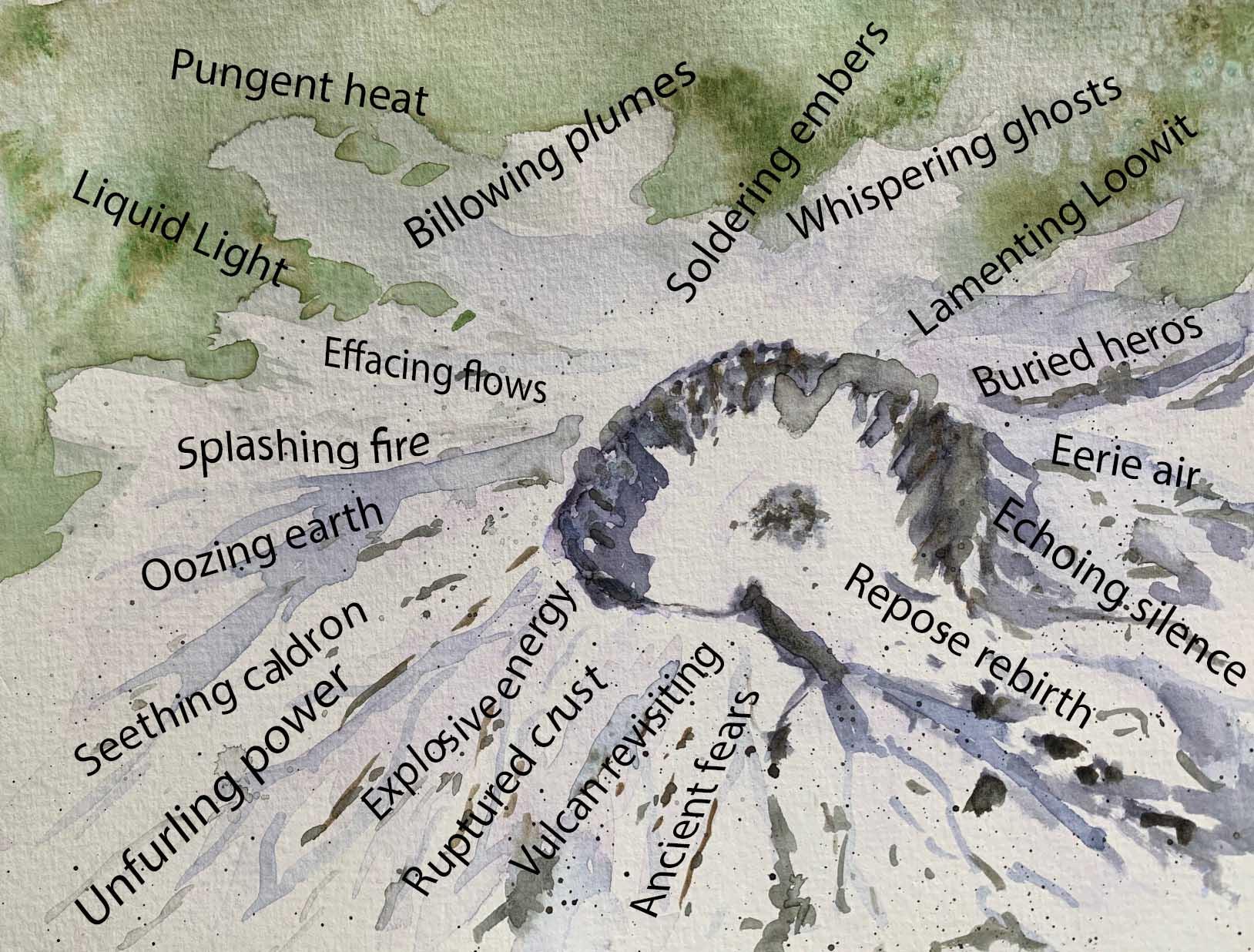We use cookies to improve your website experience. Essential cookies are required for the site to function properly, while analytics cookies help us understand how visitors use our site to make improvements. You can choose to accept all cookies or only the essential ones.

Arts and Humanities
Mount St. Helens is about more than just science!
Visual Art

Spirit Reflections
by Patrice Cook, 6"x6", scratch board

Spring Blooms at Mount St. Helens
Gina Roberti, Watercolor Painting.
Watercolor painting highlighting the beautiful natural plants that are edible and medicinal that grow around Mount St. Helens. In the foreground plants include: Salmonberry, thimbleberry, vanilla leaf and nettle.

40 Years Later
by R. Steve Parr, Acrylic Painting

Listen – 40th Anniversary Special
Shannon Beer, acrylic painting, 20"x18"

Above the Clouds
Submitted by Ben Burke, Photo by Ryan Hepner-Hart

Word Plume
by Patrice Cook


I have seen your winds bend the steel rods men laid for rebuilding the Windy River bridge. I didn’t know you then, when you blew your top, but I heard the men, and their fear, as the skies darkened and the temperature dropped. We hid behind our masks, wondering when you would descend upon our town, wondering when we too would be carried or buried away. Fear has a funny way of playing tricks on the mind, in a split second or a microscopic cell. I came to you filled with talk. So much talk. Maybe you, too, grew tired of all the talk. Too much talk. You see I had this fear of disappearing from this world with the fire still hiding inside. I held to my staff and walked around your feet for days, for weeks, for years. You puffed on your pipe, like you’d done before, not saying a word. And it was then, maybe, I began to listen. Listening is like climbing, and thinking you’re close to the top, only to discover you’re not. Only to discover you’d been thinking about the top, and not listening at all. Round and round I circled your smoking pipe, not knowing if I could listen. If I could surrender the fear, and listen. If I, too, could bear witness to the holy fire rising from within.
Written by Kara Maria Stricker, Copyright 2020
Poetry
Haiku to You Too
by David Newcomb
Big mountain, go boom!
Who will clean up this huge mess?
Well, Nature of course.
A Haiku of Lupine
by Kelly McGivern
The prairie lupine
Gives nitrogen to others
A martyr for plants
Haiku
by Patrice Cook
Lenticular cloud
cloaking deep sacred spirits
Hail ice onto fire
Summiting
by Natalie DaSilva
Up to the summit
Beauty in a sacred place
Every step a prayer
BIRTHDAY BY JONATHAN SHIPLEY
It was my father's birthday
the day Mt. St. Helens died
and gave birth to something
gray. My father could neer
really show up he loved us
except those time in the
woods when the mountains
gleamed something like hope.
START OVER BY KATIE WHITTIER
Awakening, though never asleep,
I shed my outer skin
And start over.
You think me dead, barren,
But life just looks different now,
Foreign.
Sun, wind, rain, snow, time --
My sustenance.
You leave me alone, and I thrive.
I thrive.
